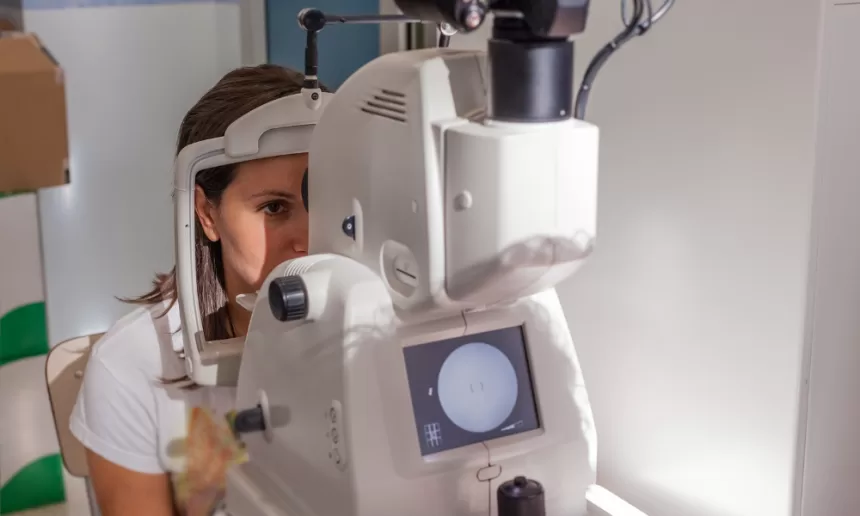Vitrectomy Surgery (Retinal Disorders)
Introduction
Vitrectomy is a refined surgery dedicated to treating retinal and vitreous diseases. The operation consists of the excision of the vitreous gel from the eye to repair the damage, restore vision, or prevent new complications. Vitrectomy is a common treatment for retinal detachment, macular hole, diabetic retinopathy and related diseases of the posterior part of the retina.
What is Vitrectomy?
A vitrectomy represents a high-level eye surgery procedure in which surgeons excise the eye’s vitreous gel and replace it with saline fluid, a gas bubble, or silicone oil. This method provides better access to the retina for treatment and improves overall eye health.
Why is a vitrectomy needed?
Vitrectomy is indicated for a spectrum of conditions of the retina and vitreous, such as:
- Retinal Detachment: Reattaches the retina to prevent vision loss.
- Diabetic Retinopathy: Removes scar tissue and blood to improve vision.
- Macular Hole: Repairs a hole in the central retina with better optical focus.
- Vitreous Hemorrhage: Clears blood that obstructs vision.
- Infections or Inflammation: Treats endophthalmitis and other conditions.
- Eye Trauma: Removes foreign objects or repairs retinal damage.
Types of Vitrectomy
- Anterior Vitrectomy: The evacuation of the vitreous gel from the anterior eye surface was performed to resolve postoperative complications during cataract surgery.
- Pars Plana Vitrectomy: A relatively frequent technique to evacuate vitreous gel from the posterior of the globe.
- Core Vitrectomy: A procedure that targets the removal of the vitreous central body.
- Peripheral Vitrectomy: Targets the vitreous-presenting cavities and treats retinal detachments, etc.
Procedure Steps
- Pre-Surgery Evaluation Full-service eye exams that include imaging exams such as OCT or ultrasound can identify whether a vitrectomy will be performed.
- Anesthesia: Patient comfort is provided with local or general anesthesia.
- Incisions and Vitreous Removal: Only small incisions are created in the sclera, and instrumentation is used to excise the vitreous gel.
- Retinal Repair: The surgeon can reattach the retina, remove scar tissue, and repair a macular hole, depending on the condition.
- Replacement Material: Saline solution, gas bubble, or silicone oil is used to replace the vitreous, filling the vitreous cavity to retain eyelid shape and promote healing.
- Incision Closure: The incisions are sealed, often without stitches.
Benefits of Vitrectomy
- Restored Vision: Treats conditions that impair vision and improve clarity.
- Prevention of Complications: Reduces the risk of permanent vision loss.
- Versatile Treatment: Addresses a range of retinal and vitreous disorders.
- Improved Eye Health: Removes blood, debris, or scar tissue that affects vision.
- Minimal Scarring: Small incisions result in minimal visible scarring.
Cost of Vitrectomy Surgery
- United States: $5,000 – $10,000
- United Kingdom: $4,000 – $8,000
- Thailand: $2,500 – $5,500
- India: $1,800 – $4,000
Best Hospitals in India for Treatment
India offers advanced facilities for vitrectomy surgery. Some of the best options include:
- Metro Hospital Faridabad (expert retinal surgeons and state-of-the-art technology).
- Max Healthcare (Delhi) provides specialized care for ophthalmic diseases of the retina.
- Fortis Healthcare (Delhi) Known for sophisticated surgical procedures and patient treatment.
Risks and Complications
Although vitrectomy is generally safe, potential risks include:
- Infection: Rare but can occur if postoperative care is inadequate.
- Bleeding: Minor bleeding inside the eye may occur.
- Retinal Detachment: Rare cases may require additional surgery.
- Cataract Formation: Common after vitrectomy in older patients.
- Elevated Eye Pressure: Temporary increase in intraocular pressure.
Recovery
Recovery from vitrectomy varies depending on the condition treated.
- First Few Days: Patients may experience mild discomfort, redness, and blurry vision.
- 1-2 Weeks: Vision gradually improves, and most patients resume light activities.
- 1-3 Months: Complete healing, and the final visual result is then obvious.



